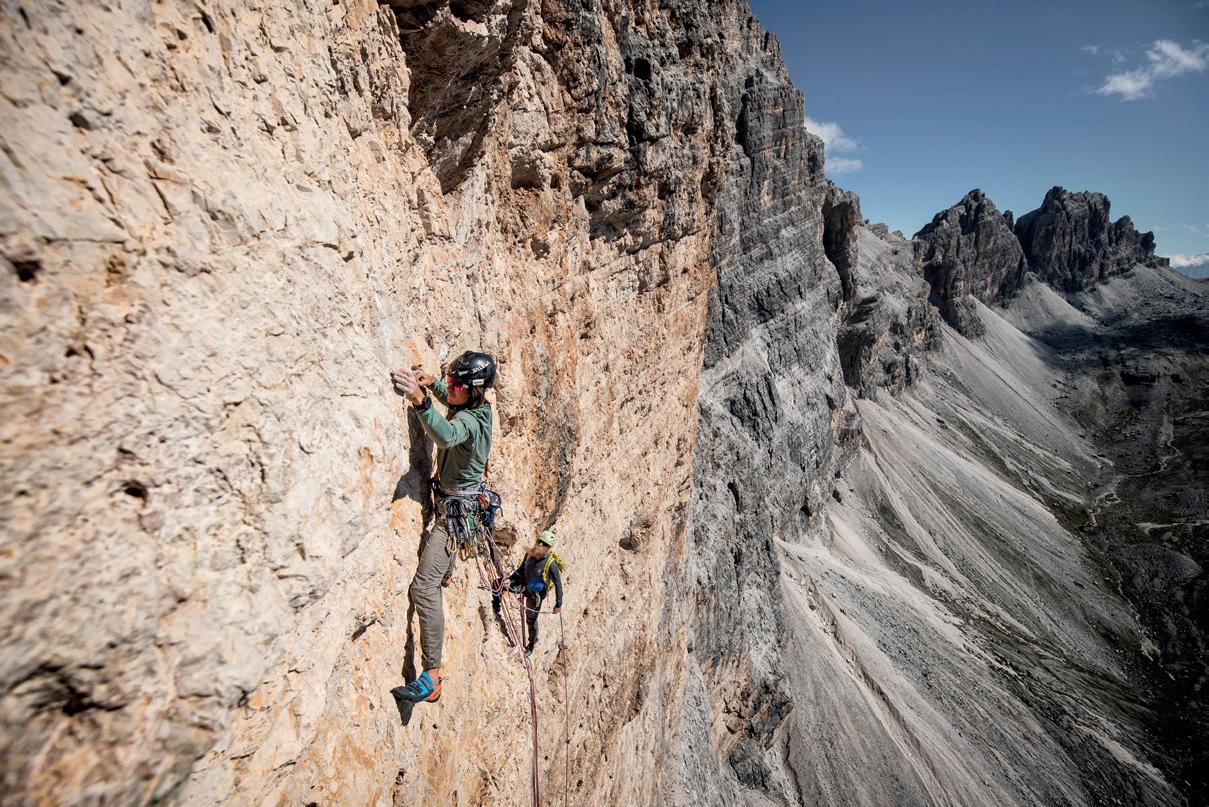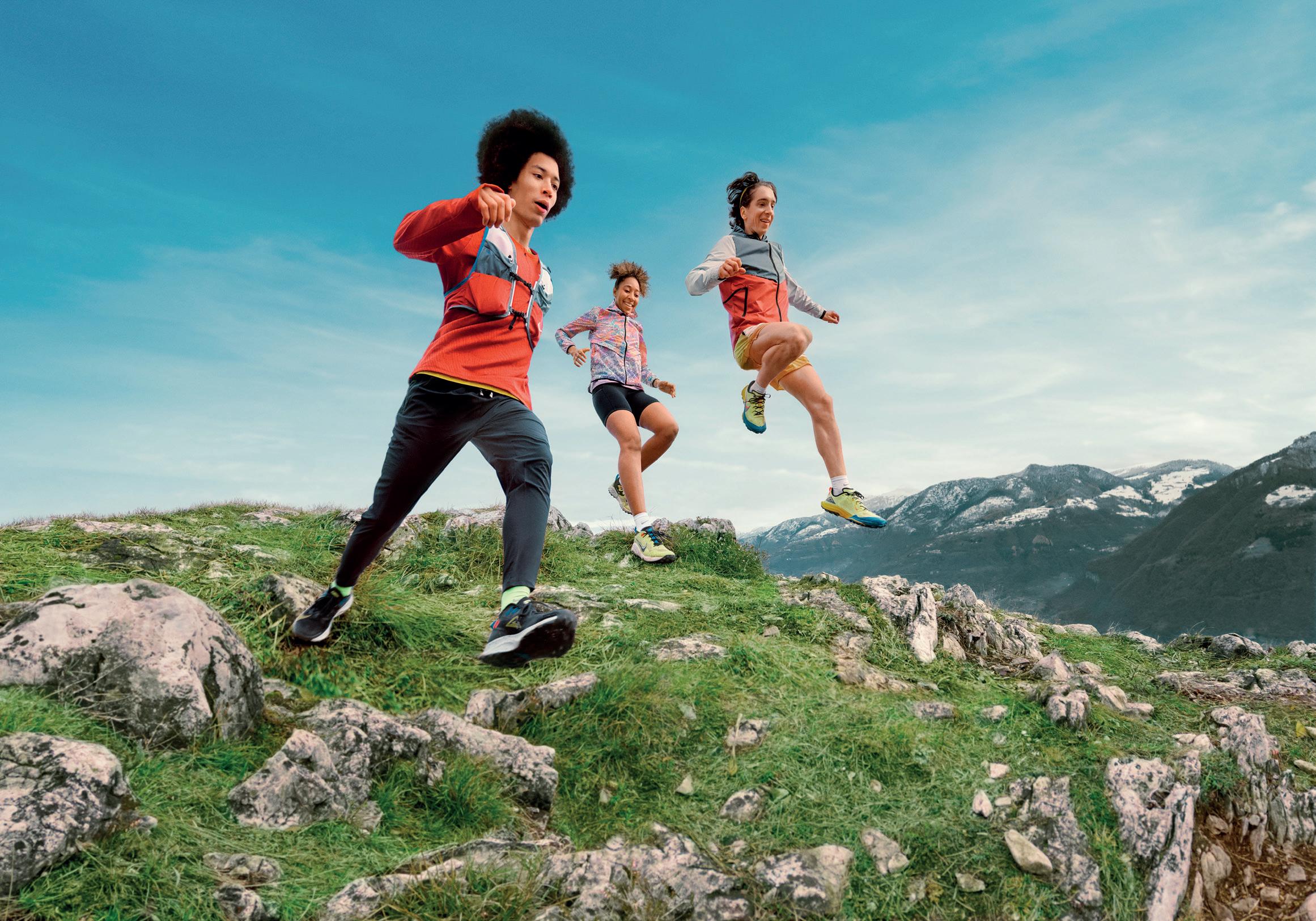
8 minute read
CAN YOU HEAR ME
by The Pill
It gives you a sense of truly fulfilling exploration and discovery without feeling the need to reach particular points of interest but simply enjoying the walk.
lection, even for food purposes, can definitely make us cooperative with the natural environment and favor a sustainable vision of our relationship with the biosphere. It typically grows in humid areas or near water and for this reason it will be easy to meet it in the parts of the trail close to the lake. It is a real plant monster that suffocates the native plants that characterize our biodiversity. The spring shoots, similar to large reddish-green asparagus, grow very quickly (on hot and sunny days even 30cm a day) and, if harvested at the right time, are tender and juicy with a pleasant sour and aromatic taste reminiscent of that of rhubarb. You can find them sprouting from the ground among dried plants of the previous year and you can collect a lot of them. You can keep them in the refrigerator and can be eaten cooked in jams or jellies and used for savory and sweet recipes. Inside, they are hollow and lend themselves well to being used as pleasant vegetable cannelloni to be stuffed as you want and then baked in the oven. Or cut and sautéed as an accompaniment to fatty dishes that need a sour tone. I recommend you to try to preserve them in a brine of water, salt, apple cider vinegar and honey. They become an alternative to the classic picalilli, much healthier and more sustainable. Collect them and wash them well. Cut them all to the same height and tuck them neatly into a canning jar. Cover until they are submerged with the brine consisting of 3/5 of apple cider vinegar, 2/5 of water, 1 tablespoon of honey for every 50g of liquid and salt to taste. Let them soak for a month before consuming them. They will be a great surprise during brunches and late spring/summer dinners! An alternative to the collection of Reynoutria Japonica, tasty and really, in the literal sense of the word, romantic is to take advantage of the young leaves of the edible trees that you would meet along the way to compose an original salad, delicious and rich in active ingredients that are really healthy. The leaves of the trees in the first 4 weeks after the opening of the leaf buds are an excellent vegetable because they are still very tender and assimilable by our body. Over time, the leaves will become more woody, similar to a sheet of paper and unappetizing. It is therefore worth taking advantage of these excellent ingredients immediately!
Along The Wanderer’s Trail, you will be able to meet elegant birch trees that stand out with their long and elegant shadows halfway up, iridescent in the silver bark. The leaves are excellent, with a nutty flavor and a strong detoxifying power. And then the majestic beech trees, which often create small forests in the area also called beech woods. The young leaves have a sour, thirst-quenching, slightly astringent taste and have the power to lower blood cholesterol levels. Lower down, absolutely to be collected, are the linden suckers, very tender and crunchy leaves with a taste reminiscent of cucumber, refreshing and satisfying. While the trails climbs up to the highest points, we manage to reach the first conifers and with them the spruce buds. The apical part of the branches of this beautiful and delicious conifer turns light green in spring, and gives us one of my favorite ingredients in the kitchen. The buds are a tender, sour and balsamic vegetable, very rich of vitamin C, which completes our tree salad with a truly unique and special touch.



Simon Gietl Can you hear me?
BY SILVIA GALLIANI PHOTOS STORY TELLER LABS

Last August 2020, professional alpinist Simon Gietl finally fulfilled a dream: completing the ascent with 20 pitches of the route he called “Can you hear me”, on the west face of the steep and intimidating Cima Scotoni (2,874m) in the Dolomites. Two years of preparation, made up of numerous attempts and physical and mental training, finally led him to fulfill the promise made to his long-time friend Gerry Fiegl.
It’s 2015 when Gerhard “Gerry” Fiegl proposed to Simon Gietl to climb the route together. That same year Gerry tragically died in 2015, aged just 27, during an expedition in the Annapurna Massif. Simon, shocked by the loss of his friend, set aside the project which, however, always remained stuck in his head. Simon dedicated 4 days to the route in September 2016, then after another four days of climbing around June 2018, and finally, on the 27th, he managed to complete all 20 pitches of the route which is opened from below, without bolts. However, it is only in 2020 that the route is finally freed.
At the start of August 2020, Simon found a solution to unlock pitch six and decided to free solo climb the route with his climbing partner and fellow Alpine Guide Andrea Oberbacher. By now, he was also able to climb all the other difficult sequences and had studied and memorised the most problematic sections. On 15 August 2020, after two years of working at it, Simon Gietl was ready to fulfil his dream, his and Gerry’s. Conditions that day were excellent, and Simon decided to start climbing in the early hours of the morning together with Andrea Oberbacher. The team had a long day ahead.
But soon things started not going according to plan. During the third pitch, Simon experienced “the first setback”. All the optimism felt at the start of the day seemed to disappear. The rock face there was very delicate and tricky chimney-like flake, and the risk of falling was high. Several times the fingers slipped from the wet and slippery holds, but in the end they managed to manoeuvre themselves back in to the wall. Standing at the belay, Simon could still feel the self-induced pressure rising. In an effort to shake off the negative thoughts, he focused on the rock face ahead. The clock was ticking but, strangely, the pressure decreased. Simon moved through the initial moves in the crux pitch with more relaxed timing, the hectic insecurity he experienced lower down the route continued to fade. He had now freed what was by far the hardest pitch and his partner congratulated him as he joined him at the belay. Nevertheless, there were still 14 pitches before the summit. No room for er-


ror or lapses in concentration. They climbed on slowly but steadily. Before the final pitch leading to the summit at 2,874 metres, Simon checked his watch. They had plenty of time but they couldn’t wait to be on the top. On reaching the summit, Simon dedicated the climb to Gerry Fiegl. Friend, climbing partner and the man with the original idea for the route that he will never climb. Simon decided to call the newly freed route “Can you hear me?”. And Gerry certainly heard him.
Simon, can you tell us how and when the “Can you hear me” project was born? When Gerry Fiegl, one of my best friends, phoned me shortly before his expedition to Nepal, he told me about a new route on the Scotoni peak. He wanted me to open it with him in a traditional way. He told me "you have to promise me" and without thinking twice I gave him my word. At that moment I didn't know what promise I was making. But when the news of his fatal accident reached me, the earth collapsed from under my feet. It was only a few years later that I decided to keep my last promise to Gerry. So I decided to open this route only for him and to always carry him in my heart.
What were the main difficulties you had? The main difficulty was certainly taking the decision of free solo climbing the route. When I found myself in front of this great wall it was immediately clear to me that I would have to give my best, everything, to keep my promise. The climb was very complicated, I progressed slowly but steadily. The route has 20 pitches and it took me 8 days divided over two years to complete it!
What emotions did you feel once reached the summit? It was a roller coaster of emotions! I was all alone on top, yet I didn't feel alone, I felt that someone was there with me and I shouted loudly "Can you hear me, Gerry?". It has been so good, after so many doubts, to finally complete this route that Gerry would have liked to climb together. I knew I was not alone up there, I had tears in my eyes, I felt happy and at the same time sad to know that it would be the last route we would climb together.
Are there any brands that supported you in this project? What technical equipment did you use? Fortunately yes! I used Salewa clothing, backpacks and helmets, it is a brand I have relied on for 15 years and which has been indispensable in this project.
Future projects? My biggest future goal is to grow old, happy and healthy, with my family! Then I still have many ideas that I would like to realize but I always say “let’s not talk about projects, let’s tell stories."












